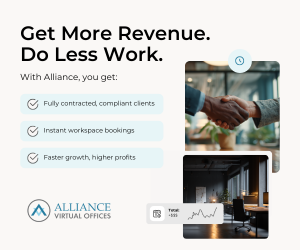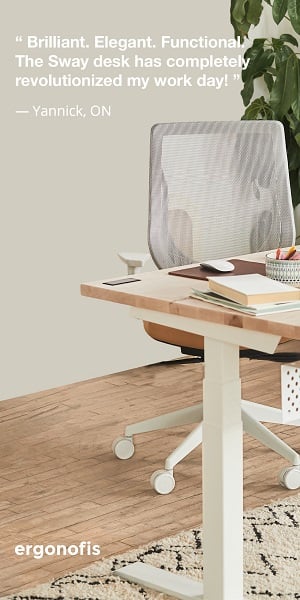- The commercial real estate landscape is experiencing a notable shift towards shorter and more flexible lease terms post-COVID, with an emphasis on adaptability to changing business needs.
- Real estate decisions must align with broader organizational objectives, considering factors like cost reduction, spatial needs, and talent attraction, necessitating a comprehensive evaluation of the total occupancy costs and flexible lease terms.
- Property owners and landlords are increasingly enhancing their offerings with amenities such as spec suites, event spaces, and gyms to meet the changing demands and attract potential tenants.
The commercial real estate (CRE) industry has been especially tumultuous for the last few years. Decisions that were once guided by straightforward metrics such as headcount and space per employee have become increasingly complicated.
Companies are now navigating a complex array of factors, including market fluctuations, shorter lease terms, hybrid work schedules, and the balancing act between immediate needs and long-term goals.
Navigating making decisions on space as a business leader requires strategic planning, but where do you start — and how can you have confidence in your choices? I recently spoke with Sarah Maffei, Vice President at Foundry Commercial, about the evolving landscape of commercial real estate, the complexities of making real estate decisions today, and her insights on creating strategies that enhance work.
She brings an inspired mix of experience from global and boutique brokerage firms and WeWork to her current role. Located primarily in the Sunbelt, Foundry has offices spanning from the Southeast to Texas and California. Working remotely, Sarah advises clients with national and global needs.
Q: Sarah, with your unique experience at both brokerage firms and WeWork, and now at Foundry, could you explain what has changed and why it is challenging to make a workspace-related decision right now?
A: Yeah, things have really changed. Before COVID and before my time at WeWork, commercial real estate was simpler. Typically, you’d calculate your space based on headcount — like a law firm might plan for X square feet per person and adjust from there. Companies were usually stable in their space unless they were growing fast or were startups.
Then COVID came along and upended how we all work, leading to a lot of unused office space. For a while, companies were unsure about their long-term office needs, trying to plan for the next couple of years without committing to five years down the line, worried about ending up with too much space.
On the other hand, business leaders were worried about not having enough space for their employees to return to. So, short-term leases increased, enabling decisions to be held off until things settled down.
Lately, we’ve noticed a change. While leases aren’t necessarily getting longer, people aren’t as afraid of committing to a three-year term anymore. It’s quite a shift from just a few years ago when a three-year lease was rare unless you went for flexible options. In Atlanta, CoStar’s research showed the average lease term dropped from 62 months in 2013 to 45 months today, a 25% decrease — a significant change in a short time.
Another big shift is in office size. Now, it’s not about having a desk for every person and enough room for private offices. It’s more about collaborative spaces. Some still want a dedicated desk, but most people come to the office to work together. So, offices are focusing more on shared spaces rather than individual offices, which used to be the norm.
Q: It’s interesting to see this growing trend of smaller spaces and shorter lease terms nationwide, with some markets experiencing a 300% increase in demand for leases under three years and spaces under 3,000 square feet. While I am an advocate for flexible workspaces, they’re not always the perfect solution. When advising clients, how do you decide between a traditional lease, a spec suite, or flex space?
A: At the outset, we often explore both traditional and flexible options with clients. It’s usually clear if flex is needed, especially for terms under three years, which are becoming increasingly common. If clients want to avoid build-out risks — time, money, and disruption to their business — spec suites are a smart choice.
For those needing quick occupancy or with a smaller team, traditional routes might not be worth it. Enterprises with multiple locations can benefit from flexible providers offering coverage across markets. And for younger companies seeking agility, flex is ideal, allowing for easier adjustments to occupancy needs.
Q: Flexible workspace is often dismissed as costly. However, when comparing total occupancy costs for smaller spaces and shorter terms, flexible workspace most often is less expensive. How do your clients respond when you offer flex as a solution? Do they understand the benefits, or do you find yourself educating them? Is there resistance, and what’s their overall reaction?
A: On the tenant side, most tenants now grasp the concept of flexible workspace. While they may have questions about what’s included, such as privacy concerns regarding Wi-Fi networks, they generally understand why there’s typically a premium for flex space.
Traditionally, we analyze space cost on a per-square-foot basis, but flex space is priced per seat, reflecting its unique nature. Although comparing prices can be challenging due to different cost structures, tenants increasingly recognize the value of flexibility and included services. Initially, there was confusion about paying more for flexibility, but as more companies adopt flex solutions, understanding has grown.
When comparing traditional leases to flex space, it’s not just about rent but also about other expenses like legal fees and administrative tasks, which may be included in the flex space package. This shift has led to a clearer understanding among tenants about the overall cost-effectiveness of flex space compared to traditional leases.
Q: When it comes to flex space, we’re looking at the total cost to house each person—everything from furniture to internet, lighting, shared amenities, etc. How do you shift the conversation from focusing solely on price per square foot to factoring all in cost?
I think many of our occupier clients often grasp this concept more easily than some of the real estate professionals. It’s understandable; we tend to become entrenched in our expertise and ways of thinking.
However, this situation challenges us to approach things from a fresh perspective. We’re moving beyond simply considering rent and building operating expenses (opex). Instead, we’re looking at the complete picture: what it truly costs for tenants to occupy space.
Yet, as real estate professionals, we may lack insight into all aspects of our clients’ operating budgets, such as what they pay their administrative staff or spend on supplies. We don’t have that. This lack of comprehensive information can hinder our ability to make fully quantified analyses. And so we make assumptions and that adds time to the process. Consequently, it’s been a bit of a learning curve for everyone to understand and effectively compare different options.
Q: This leads well into my next question: Workspace and facilities costs are the second largest fixed line item after people. Getting this right is crucial for business health. Without a crystal ball, how do you efficiently guide your clients through this process? What are your top tips for navigating it effectively?
A: Understanding your business objective is crucial as it drives every decision regarding your real estate space. While some clients may have a clear idea of their spatial needs, it’s essential to dive deeper into their overarching business goals. Are they seeking to reduce costs, accommodate growth, or enhance their talent pool by relocating to a more attractive area? By pinpointing these objectives, we can tailor our approach to finding solutions that best serve their needs.
Often, clients aren’t aware of the full range of possibilities available with their real estate. They may not realize the potential for creative deals, subleasing opportunities, or other innovative strategies to optimize their space utilization. As advisors, we bring our expertise to the table, exploring all avenues to align their real estate strategy with their business objectives effectively.
On a more tactical level, it can be smart to incorporate flexibility into their lease agreements to adapt to changing circumstances. For instance, including expansion options to accommodate future growth, contraction or termination clauses to mitigate risks during economic downturns, or rights of first refusal to secure additional space if needed.
These provisions provide clients with the agility they need to respond to evolving business needs while ensuring their real estate investment remains aligned with their long-term goals.
In summary, by understanding our clients’ business objectives and leveraging flexible lease terms, we can craft a real estate strategy that not only meets their immediate needs but also sets them up for long-term success.
Q: So, when we discussed risk mitigation, you mentioned several points, including minimizing exposure to capital expenditures and maximizing tenant improvement allowances by extending the lease term. What role does free rent play in this strategy, and how are trends in securitization affecting lease negotiations?
Concessions like free rent can vary depending on the market dynamics. Typically, in traditional office leasing, tenants may expect to receive about one month of free rent for each year of the lease term. This means if you sign a five-year lease, you might negotiate for five months of free rent upfront.
However, these terms can fluctuate based on market conditions. For instance, in softer markets, landlords might offer more concessions to attract tenants, while in tighter markets, they may be less generous.
When negotiating lease terms, it’s crucial to align them with your business objectives. Real estate decisions should not be made in isolation but should serve the broader goals of the organization.
For instance, if your primary objective is to minimize upfront costs, you might prioritize negotiating for more favorable lease terms. On the other hand, if your focus is on long-term flexibility, you might seek lease structures that offer greater agility.
Clear communication between tenants and real estate professionals is vital throughout the negotiation process. Clients need to understand the implications of different lease terms and concessions. Real estate professionals play a crucial role in educating clients about their options and guiding them towards informed decisions.
By fostering open communication, both parties can work together to craft a lease agreement that meets the client’s needs while also aligning with market realities.
Cash flow and risk management are central considerations in lease negotiations. Understanding your organization’s financial position and risk tolerance is essential for structuring a lease that balances cost-effectiveness with flexibility.
For example, if cash flow is a primary concern, you may opt for lease terms that spread out payments over time or include provisions for rent abatement. Conversely, if minimizing risk is paramount, you might prioritize lease structures that offer greater certainty and stability.
Ultimately, navigating the complexities of commercial real estate requires a holistic approach that considers both immediate needs and long-term objectives. By carefully evaluating concession packages, aligning lease terms with business goals, fostering clear communication, and managing cash flow and risk effectively, tenants can make informed decisions that support their overall business strategy.


 Dr. Gleb Tsipursky – The Office Whisperer
Dr. Gleb Tsipursky – The Office Whisperer Nirit Cohen – WorkFutures
Nirit Cohen – WorkFutures Angela Howard – Culture Expert
Angela Howard – Culture Expert Drew Jones – Design & Innovation
Drew Jones – Design & Innovation Jonathan Price – CRE & Flex Expert
Jonathan Price – CRE & Flex Expert












